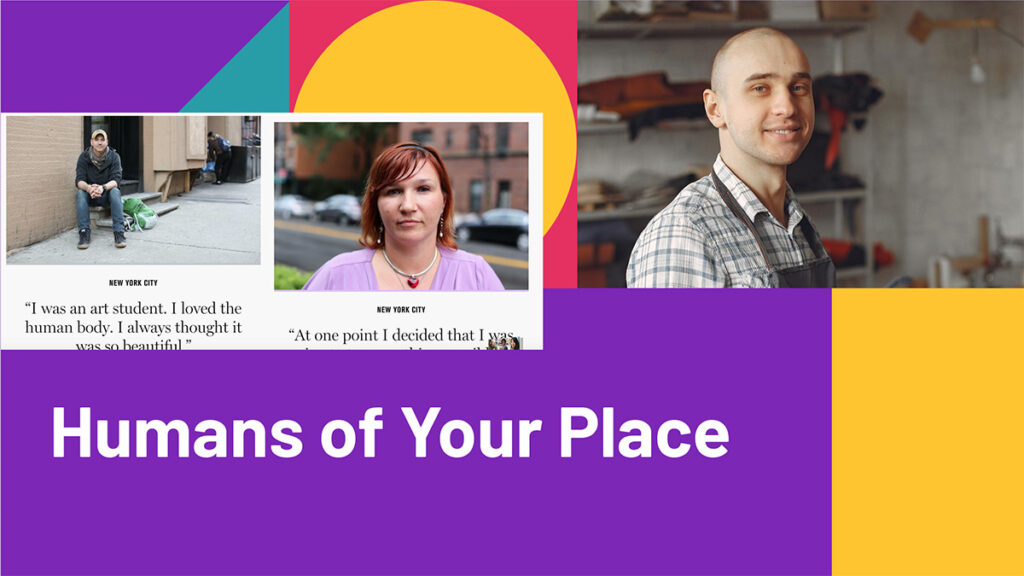Humans of Your Place Make Cycle

What
Students engage with a partner in class to get curious about who they are as a human. Students then publish a piece about their partner, and in turn, have a piece published by their partner about them. These pieces are modeled off of the Humans of New York project by Brandon Stanton. In the span of one or two meetings, students can practice interviewing, being interviewed, photography, quote writing, and what it feels like to both publish and be in a publication.
Why
Students as citizens:
Curiosity and conversation—Students practice one method of getting to know a person beyond what they see on the outside or hear about them from others: that method being asking questions. Students get experience acting on their curiosity, helping engage in a conversation with follow-up questions and connections.
Publishing—students get to think about the difference between what is experienced in a conversation or an interview and what is published for all to see. They get to try their hand at choosing what to leave out and what to keep in. In seeing this, they experience, on a very light and more feature-y scale, what news rooms do when they choose some words and leave other words out in order to give readers a picture of the truth.
Students as learners:
Students have the opportunity to feel what it feels like to both pose questions about someone and what it feels like to be asked those questions. Taking note of their comfort level during that process may help them as they step out into other learning where they are engaging with interviews or speaking with others about ideas. Students also get to try a form of writing that is quite different from writing they might be used to. They are practicing choosing words to publish from someone else rather than writing their own words. Helping kids see that this is a form of writing is helpful to launch into journalistic writing more broadly.
Making It Possible
Reading text books and novels and articles and poetry is a common way students learn about the world around them in the context of school. What happens if we open the door to the possibility of each student being a living story that we can learn from as a student community? What happens if we peel back the paper pages or screens of social media and engage each other in learning through curiosity? Prior to engaging in this project, it is important for students to feel as safe as possible to share parts of their stories. Setting agreements can be a great way to at least get that started. Some students may want to share only funny moments or show their funny personality. Other students might bring up some personal stories that don’t always come out with a stranger. Both show truth of who that student is. By creating a space where students feel free to just explore each other and explore what they individually want to share, this project can create a launching point for students to continue to want to ask questions of their peers and of people they don’t usually talk to in order to foster understanding and belonging in a community.
What would happen if we focused on each other’s stories not as judges, but as humanistic journalists?
How
Using this PowerPoint presentation with linked documents can be helpful to work through the publication.

